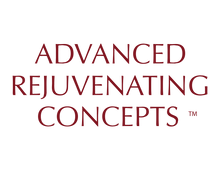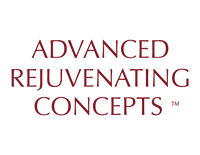Women's Acne: Problems and Solutions
Let’s face it, adult acne is influenced by multiple factors and 22% of American women experience some form of adult acne in their life. Scientists continue to research this condition in hopes of finding a simple solution that will improve the lives of tens of thousands of women. Unfortunately, the many variables that contribute to acne, like hormones, stress and sleep, medication, and a genetic disposition, can be unique to each individual. Aesthetician’s who take clients with acne above and beyond the basic facial are the most successful at delivering acne therapy because they understand the physical, social, and psychological impacts this condition has.
A NEW WAY OF THINKING
Acne cannot be cured or truly cleared—it can only be managed. Acne therapy takes the most notable concerns with acne and delivers them in a concise and honest treatment plan. Before delving into the treatment plan, it is important for aestheticians to communicate to clients about their skin’s condition. When a woman suffers from acne, it interferes with her level of confidence and can increase her feelings of isolation. Having the ability to relate with an acne client and help them understand that they’re not alone is as critical to the treatment plan itself, which is why I like to call it acne therapy.
On the treatment side of therapy, aesthetician’s need to think long-term and consider all the variables, including melanin content of the skin, grade of acne present, what kind of lifestyle do they have (i.e. high stress, smoker, alcohol consumption), and whether the client’s skin is oily, dry, combination, dehydrated or sensitive. All of these variables can alter the professional and home care approach you take with the client’s treatment plan.
MICROTREATMENTS
Approaching middle age and suffering from acne is stressful in itself. Professional survival (for men and women) requires vitality and a confident look. Middle aged faces begin to show the signs of sun damage, fine lines and discolorations may be emerging, and… there’s the acne. Modern women require treatments that will help remedy all of these concerns in order to stay confident in the forefront of their social lives and careers. Here’s some adult acne treatments I recommend:
Peels: Types of acids and what works best for acne.
When someone mentions oily or acne skin, the first peel on every aesthetician’s mind should be salicylic, however, there are a few other chemical peel solutions that can greatly benefit a client with acne. When choosing a peel solution always consider the proper use and contraindications of peels, apply these rules to each client as an individual. If the client is not a candidate for a peel, opt for a deep pore or extraction facial.
Salicylic Acid, derived from willow tree bark, is a phenolic phytohormone and a key ingredient in the treatment of dermatitis, acne, psoriasis, keratosis pilaris and hyperpigmentation. It is a keratolytic, comedolytic and bacteriostatic agent that encourages exfoliation, helps manage oil, releases blocked pores and constricts pores to help prevent breakouts.
Jessner Peel is a formulation of salicylic acid, lactic acid and resorcinol that removes superficial layers of dead skin, but before you consider the traditional layered peel application for an acne client, opt for a diluted solution or modified 7% solution. After a deep pore or extraction facial, dilute a 14% Jessner Peel with a salicylic toner, or use a modified 7% solution to finish the treatment. Apply the peel to a cotton pad and swipe the solution over problem areas. A Jessner Peel could also be used as a spot treatment for acne lesions to help clear them faster.
Glycolic Acid, derived from sugar cane, is the smallest hydroxy acid and breaks down very superficial skin cells by dissolving cellular bonds and excess oil. It is very small in molecular size compared to its hydroxy acid “cousins” and can penetrate the skin well, making it effective at encouraging cell turnover and collagen production. Glycolic acid also acts as a humectant and helps increase the skin’s natural hyaluronic acid content of the skin. A win for most all skin types, glycolic peels may become a preference in the fall and winter months when acne skin types tend to suffer from excess dehydration.
Retinol solutions for acne can relieve congested pores and enhance cellular regeneration and keratin synthesis, which, in turn, prevents the pore from becoming blocked and forming a blemish. Retinol Peels are self-neutralizing solutions that contain a higher percentage of retinol, or like derivative, with a hydroxy acid and/or acetic acid to encourage optimal penetration and results for acne, scarring and sun damaged skin.
Frequency: Peel solutions may be applied every four to six weeks.
Microdermabrasion
Many aesthetician’s have asked me about the type of microdermabrasion unit to purchase for their practice. Purchasing a unit can be costly and every professional wants a machine that can deliver for decades. Having both options available is best and there are machines available that can do both, because when it comes to acne treatments, crystal microdermabrasion is best.
Corundum crystal (a.k.a. aluminum oxide) is the original method of microdermabrasion and best for acne treatments. Crystals create micro-wounding of the skin and can remove about 15 microns of skin with two passes. This exfoliation relieves congested pores and brightens skin tone, but it is also dries the skin which is great for a client with excess oil and acne concerns.
Vacuum pressure is a vital component to microdermabrasion because is encourages blood flow to the skin’s surface, nourishing and oxygenating active skin cells and assisting with the healing and repair process of acne lesions. Unfortunately, clients with capillary damage over the treatment are are not candidates for microdermabrasion because the vacuum may make the condition worse.
Frequency: Microdermabrasion may be performed every four to six weeks. However, you may customize your facials by offering a partial microdermabrasion or spot microdermabrasion over areas of concern and not the entire face.
Ultrasonic
I believe ultrasonic is one of the most versatile tools and aesthetician can own because it is highly effective treatment option for anti-aging, sensitive skin and rosacea, and both comedonal and cystic acne. Balancing moisture and hydration is critical for encouraging healthy desquamation and regeneration of skin cells for all skin types; ultrasonic does this and more by penetrating beneficial antioxidants and anti-inflammatory ingredients into the skin.
Sebum composition in oily skin types inhibits proper desquamation of skin cells which leads to a blocked pore. Women with acne may, or may not, have excess sebum production, however, with oily skin acne concerns the sebum composition is lower in free fatty acids and significantly higher in squalene, a precursor to cholesterol. Squalane oxidation may be comedogenic and induce inflammatory responses in the skin, but this moisturizing ingredient is something dry skin types need. Ultrasonic is unique in that it can help balance natural sebum by increasing the amount of beneficial fatty acids (like linoleic acid) and increase hydration in the skin to encourage regeneration and desquamation.
Ultrasonic cavitation is the exfoliation mode of an ultrasonic tool and utilizes sound waves with water to essentially pressure wash the skin surface. As the spatula glides over the skin surface, the water blasts away dead skin cells while the vibration of sound waves helps loosen compacted sebum from the follicle. The spatula has small corners that easily reach in the crevice around the nostrils. Overall, the process makes extractions easier to perform for you and less painful for the client.
Ultrasonic penetration, when used with high quality skin care products and the right combination of products, hydrates the skin and increases antioxidant content that helps reduce inflammation. Key ingredients to use include hyaluronic acid, vitamin E, vitamin C ester, vegetable glycerin, and tea tree oil. Most ultrasonic devices offer two modes, however, if you have a machine that includes a third deep penetrating mode, you have the ability to advance the treatment for cystic acne. Deep pulsating sound waves help facilitate dermal heating that, in turn, help reduce infection and shrink the cyst.
Lymphatic drainage is a wonderful benefit of ultrasonic facials when the proper technique is utilized—you have to learn the motions for lymphatic drainage, it doesn’t happen naturally or alone with the machine. As sound waves hydrate and nourish the skin, they are contouring the face and assisting with the healing and repair process of acne lesions.
Frequency: Ultrasonic, as a standalone facial, may be performed every two weeks. However when combined with a light peel or microdermabrasion, frequency is extended to every four to six weeks.
Laser/IPL: Photorejuvenation for women’s acne.
Intense Pulsed Light is an effective, yet more expensive, treatment option for adult acne concerns. IPL photorejuvenation packs the skin with blue-ranged light to help reduce infection which, in turn, reduces inflammation and shrinks cystic formations. P. Acnes bacteria produces porphyrins (pigmented organic compounds) that have an absorbtion spectrum of 400 to 700 nanometers of light wavelengths. The light excites the porphyrins into creating free radicals that help destroy P. Acnes bacteria. After three passes of a 420 nm light wavelength, a centralized burst-pulse at 560 or 590 nanometers over acne lesions helps reduce and prevent red or brown spots associated with post-inflammatory hyperpigmentation formation.
Frequency: IPL treatments for acne may be performed every one to two weeks.
TREATING ADULT ACNE AT HOME
Perimenopause and Acne
Women experiencing the changes of menopause are likely to notice acne lesions along the jawline, chin, around the mouth and even the neck. This type of acne formation is likely the result of a decline in estrogen levels and does not necessarily indicate a need for a comprehensive acne regimen and treatment plan. Most women who present with perimenopausal acne will have balanced to dry skin and their acne treatment should be limited to spot or regional treatment only.
Skin care essentials that offer anti-aging benefits are important to this client because, after perimenopause, the rate of intrinsic aging accelerates with the change of hormones. This client’s skin care regimen should keep their skin moisturized and hydrated, include a vitamin C serum and retinol serum, and acne products should be limited to a single spot treatment product that contains benzoyl peroxide, salicylic acid, sulphur or tea tree oil. A comprehensive acne skin care plan (i.e. cleanser, toner, oil-free moisturizer, etc.) can irritate and over-dry the client’s skin, resulting in inflammation and sensitization—unless the client has oily skin and acne.
Pregnancy Acne / Mothers Who Breastfeed
Every woman and every pregnancy has a unique experience with acne. Women who experience acne may find the condition worsen or, on the other hand, their skin may improve. Pregnancy-related acne may come and go at any point during the pregnancy, stay for the entire nine months, or appear after pregnancy. Line perimenopausal acne, it is hormone related.
A botanical approach to acne therapy is the safest and most preferred method of treatment. Salicylic acid is not recommended because it is a derivative of aspirin. High doses of aspirin, consumed orally, has been attributed to birth defects and pregnancy complications. Isotretinoin and topical retinoid prescriptions are also known to cause birth defects. Topically applied salicylic acid or benzoyl peroxide have not been thoroughly evaluated for their effects on pregnant women. Playing safe is smart, opt for natural ingredients for prenatal acne: tea tree, sulfur, glycerin, yeast proteins, citrus oils, and fruit enzymes. Finally, less is better when it comes to composing a beneficial regimen: cleanser, hydration, treatment, and sun care.
Hormonal Acne (with or without melasma)
The acne that has a tendency to ebb and flow, hormonal acne usually appears with menstrual cycles, oral contraceptive use, or other hormonal changes. This type of acne may or may not present itself with melasma, or hormonally induced hyperpigmentation. Like perimenopausal acne, alter your treatments of this type of acne with the client’s skin type (balanced, dry, combination, oily) to prevent drying or sensitizing their skin.
Clients with hormonal acne have multiple treatment options depending on the degree and severity of their acne. Oily skin with comedonal acne can benefit from a comprehensive oil control regimen, whereas, a dry skin with occasional comedonal breakouts will only need a spot treatment product. Stimulating anti-aging products, primarily those containing manufactured peptides, may be too stimulating for a client with balanced to dry skin and hormonal acne, so keep their regimen simple with a vitamin C and retinol serum for anti-aging.
Melasma with hormonal acne will take time to treat. Unlike sun damage, melasma does not “go away” with products and treatments, on the contrary, it is easily stimulated with the wrong combination of products or treatments. Remember the lesson learned from the tortoise and hare tale? Slow and steady wins the race—as your melasma treatments should be, because it is one of the visible manifestations of hormonal imbalances within the body. Two ingredients recommended for this skin concern includes kojic acid and azelaic acid. Both assist with infection associated with acne and help reduce the visible signs of hyperpigmentation.
Stress and Acne
A well-known experience for most women science has yet to piece together, stress-induced acne can be an acute or chronic concern. Modern living has many variables that contribute to sleep disturbances or reduce the amount of time we are sleeping, and “beauty sleep” is no joke. Most women have household responsibilities, are raising children, and work full time. Technology, although highly convenient and useful, plays a role in disrupting our life too. All of this can increase the risk of developing depression and anxiety or an overall decline in vitality that might manifest visibly on the face or body as acne. Treatment for stress acne may be fruitless without lifestyle changes. Depending on the skin analysis, this client may need a comprehensive acne regimen or spot treatment product.
Medication Acne
Testosterone supplements or other bioidentical hormone therapy, or steroid use are the most common culprits of medication-induced acne. Unless the client’s doctor has an alternative method of treatment, this type of acne may persist as long as the client is on the prescription. Depending on the skin analysis, this client may need a comprehensive acne regimen or spot treatment product. Balancing their skin type is critical to prevent over-drying the skin or sensitization from over-use of acne products.
Best Practices for Aestheticians
- Perform a consultation and skin analysis at every appointment and note changes in regimen and medications (OTC and Rx).
- Do not perform facial peels, microdermabrasion or ultrasonic on the following:
- Inflamed or sensitized skin, or skin with open lesions. This includes facial injections, the client must wait 48 hours before receiving a peel.
- Isotretinoin use, or use within the past 6 months. This includes Accutane, Myorisan, Amnesteem, Claravis, Absorbica, and Zenatane.
- Vsible active inflammation or sensitized skin, including rosacea, inflammatory acne, cold sores, eczema, psoriasis or dermatitis.
- Clients who have had facial waxing, used depilatories, or have had a laser procedure within the past two weeks.
- Clients who tan or use a tanning bed, or are exposed to the sun daily with her/his occupation.
- Do not peel, or use extreme caution when performing a peel on clients who use cosmeceutical exfoliants and/or retinol (OTC and Rx). Clients should stop using these products 48 hours before their facial appointment.
- Do not use products that the client is allergic to—know your products and ingredients.
- Always perform facial treatments that are within your scope of practice, license, and insurance policy.
Other Considerations
Nutrition and environment play a role in acne therapy. Choosing an anti-inflammatory diet and increasing consumption of vegetables and lean proteins (fish, chicken, nuts) can help improve acne skin. Balancing a skin regimen with topical antioxidants helps reduce oxidative stress , thus reducing inflammation.
Post-Inflammatory hyperpigmentation and scarring are two of the most critical concerns for acne clients. PIH, also known as the faux scar, is the result of deep-rooted trauma to the skin and activated melanocytes, and can present as brown or red spots on the face. Scars are an amazing example of how imperfectly our skin can heal after distress. Ultimately, disposition and depth of inflammation can contribute to ice pick or depressed acne scars. Proper acne management and the right combination of skin care products can help prevent both of these concerns.
REFERENCES
Pappas, A., Johnsen, S., Liu, J.C., Eisinger, M. Sebum Analysis of individuals with and without acne. Dermatologist Endocrinology. 2009 May-Jun; 1(3): 157-161
Albuquerque, R.G.R., Rocha, M.A.D., Bagatin, E., Tufik, S., Andersen, M.L. Could adult female acne be associated with modern life? Archives of Dermatological Research. 2015 Oct; 306(8): 683-688
Tanghetti, E.A., Kawata, A.K., Daniels, S., Yeomans, K., Burk, C.T., Callender, V.D. Understanding the Burden of Adult Female Acne. Journal of Clinical and Aesthetic Dermatology. 2014 Feb; 7(2): 22-30



